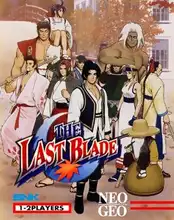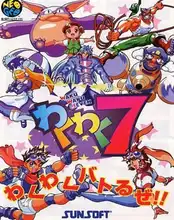Remember the clang of quarters dropping into a slot, the sticky feel of a well-worn joystick, and the frantic button mashing that defined arcade alleys? For many of us, that sensory overload was synonymous with the rise of the 2D fighter. More than just a genre, these games became cultural touchstones, pitting pixelated warriors against each other in vibrant, side-scrolling arenas.
While 3D fighters have their place, there's a timeless magic to the classic 2D fighter. It's about crisp sprite animation, deliberate movement on a single plane, and mastering intricate inputs for devastating special moves. It's a style that defined an era and continues to resonate with gamers today.
The Arcade Dream: Where it All Began
Before home consoles could truly replicate the experience, the arcade was king. Games like Street Fighter II didn't just popularize the 2D fighter; they created a phenomenon. Lining up for your turn, watching experts pull off impossible combos, and the sheer energy of a crowded arcade floor were all part of the package.
This golden age saw an explosion of creativity. Developers experimented with different styles:
- Capcom refined the technical, strategic gameplay with series like Street Fighter and the faster, more stylish Darkstalkers.
- Midway brought digitized graphics and controversial gore to the forefront with Mortal Kombat.
- SNK delivered high-quality, often complex fighters on the powerful Neo Geo hardware, including Fatal Fury, Art of Fighting, and The King of Fighters.
Each game offered a distinct flavor, contributing to a rich tapestry of pixelated combat.
Iconic Styles: More Than Just Punching
What makes a great 2D fighter stand out? Often, it's the unique visual flair and mechanics.
- Street Fighter's iconic character designs and emphasis on spacing and timing.
- Mortal Kombat's gritty realism (for the time) and infamous fatalities.
- Darkstalkers' gothic horror aesthetic, fluid animation, and emphasis on air movement and speed.
- Games like ClayFighter leaned into quirky, unique visuals using stop-motion claymation, offering a different kind of charm, even if the gameplay wasn't always top-tier.
These games weren't just about fighting; they were about personality, world-building (even if minimal), and unforgettable characters that are still popular today.
Bringing the Fight Home: Console Ports & Challenges
As technology advanced, the 2D fighter migrated from the arcade to living rooms. This transition wasn't always smooth. Early console ports often suffered from:
- Reduced animation frames
- Missing characters or stages
- Lower sound quality
- Simplified gameplay mechanics
However, consoles like the Super Nintendo, Sega Genesis, Sega Saturn, and PlayStation eventually delivered some incredible home versions. The Sega Saturn, in particular, became a haven for arcade-perfect 2D ports thanks to its architecture. Even the Nintendo 64, known more for 3D, had a few notable (if sometimes compromised) fighting games, though pure 2D fighter options were less common than on its competitors.
Playing at home meant endless practice, discovering hidden moves in manuals (remember those?!), and epic couch multiplayer sessions with friends and siblings.
Why We Still Love Them: The Enduring Appeal
Decades later, classic 2D fighter games haven't lost their punch. Why do we keep coming back?
- Simplicity & Depth: Easy to pick up and throw a fireball, but with layers of complex strategy to master.
- Art Style: The pixel art and hand-drawn sprites have a timeless appeal that modern graphics can't replicate.
- Nostalgia: They transport us back to simpler times, evoking fond memories of arcades and sleepovers.
- Community: The competitive scene for many older titles is still alive and well, with players discovering new techniques even today.
The Legacy Lives On
While new 2D fighter series might be less common than in the 90s, the spirit lives on. Compilations like the Capcom Fighting Collection or Street Fighter 30th Anniversary Collection bring classics to modern platforms. Digital storefronts like GOG offer easy access to PC ports of vintage fighters. Emulation tools like DOSBox or MAME allow fans to preserve and play countless titles from the era.
The core mechanics and design principles established by these pioneers continue to influence modern fighting games. The 2D fighter isn't just a relic of the past; it's a fundamental pillar of gaming history that remains vibrant and incredibly fun to play.
FAQ: Your Burning 2D Fighter Questions
Q: What was the first majorly successful 2D fighter? A: While earlier games existed, Street Fighter II (1991) is widely credited with popularizing the genre and setting the standard for future 2D fighter games.
Q: Are there any modern 2D fighters? A: Yes! While the classic pixel art style is less dominant, games like Guilty Gear Strive, Dragon Ball FighterZ, and BlazBlue continue the tradition with modern graphics and complex 2D fighter mechanics.
Q: Where can I play classic 2D fighting games today? A: You can find many official re-releases on platforms like Steam, PlayStation Store, Xbox Marketplace, and Nintendo eShop. Services like GOG also offer classic PC ports. Additionally, emulation allows access to many titles, though availability and legality vary.
Q: Why were some console ports worse than the arcade? A: Early home consoles had significant technical limitations compared to dedicated arcade hardware, including less memory, slower processors, and fewer graphical capabilities, making direct ports challenging.
Ready to Rumble?
Whether you're revisiting an old favorite or discovering a classic for the first time, the world of the 2D fighter offers endless excitement, challenge, and a potent dose of gaming history. Grab a controller, pick your character, and step into the arena!


